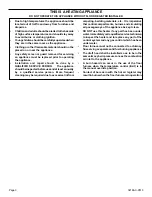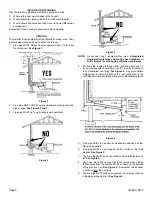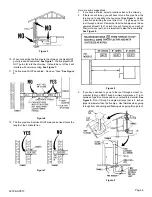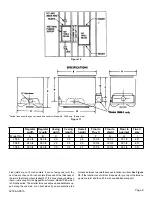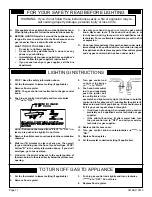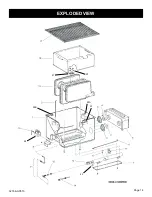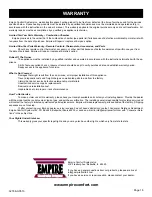
32186-0-0513
Page 5
INstALLAtION pLANNING
Plan the furnace installation with three questions in mind:
1. Where is the heat most needed in the house?
2. Where should the furnace be so that it will vent properly?
3. Where should it be placed so that it is not in home traffic areas
or walkways?
Remember! Good Venting is essential to Good Heating.
vENtING
The installer must consider all of the following venting rules. They
will help plan where and how to install the furnace.
1. Flue pipe MUST always have an upward slope (1/4 inch per
foot minimum).
see Figure 1.
Figure 1
2. Flue pipe MUST NOT have any downward sloping sections,
dips or sags.
see Figures 2 and 3.
3. Flue pipe MUST be Type B (double wall insulated).
Figure 2
Figure 3
NOtE:
Do not use Type C single wall flue pipe.
Uninsulated
single-wall metal pipe shall not be used outdoors in
cold climates for venting gas utilization equipment.
4. For flue pipe running through walls, roof and within one (1)
inch of combustible construction, use B-1 (one inch clearance
to combustibles) vent pipe.
see Figure 4
. Any combustible
material that is within 6 inches of the vent connection or the
draft diverter must be shielded with a non-combustible material.
Figure 4
5. Flue pipe MUST run as directly as possible and have as few
elbows as possible.
6. Flue pipe MUST be as large as the flue collar on the draft
diverter.
see Figure 5.
7. The flue pipe MUST be on the outside of the draft diverter col
-
lar.
see Figure 6.
8. Each new piece of flue pipe that is connected when getting
farther away from the furnace MUST connect on the outside
of the previous one.
see Figure 6.
Remember, the exhaust
must flow "
into" the next pipe.
9. The flue pipe MUST NOT be connected to a chimney that has
a fireplace connected to it.
see Figure 3.



